Marble and Granite Prices in Egypt - Egyptian and Imported - Marmo Marble
- Mohamed Ibrahim

- May 1
- 11 min read
Egyptian marble prices, Egyptian granite prices, imported marble prices, and Egyptian granite prices in Egypt from Marmo Marble and Granite Company. We provide prices for all types of marble and granite in Egypt with pictures, provided by Marmo Marble Company, the number one company in Egypt and the Middle East.

Marble and granite are natural materials widely used in interior and exterior design due to their natural beauty, durability, and high quality. Their uses range from flooring, walls, kitchen countertops, and interior and exterior decoration. Given the diversity of sources and varying prices, it's essential to know the prices of marble and granite, whether locally produced in Egypt or imported, to ensure the desired quality within the project's budget.
Imported marble prices
1. Key Differences Between Egyptian and Imported Marble Prices
Imported marble is a popular choice in many markets due to its wide variety of unique patterns and designs. The most important differences are:
Aesthetic Diversity: Imported marble is available in a wider range of colors and patterns that may not be available locally.
Superior Quality: Some imported marble types often come from internationally reputable sources, ensuring the highest quality.
High Cost: Imported marble prices are often higher due to shipping costs, customs, and administrative procedures related to importing.
2. Factors Affecting Imported Marble Pricing
Imported marble prices are affected by several factors, including:
International Shipping and Transportation Costs: Transportation and customs costs are among the most important components that affect the final price.
Exchange Rate: Prices are affected by the stability or volatility of the exchange rate between the Egyptian pound and foreign currencies.
Global Supply and Demand: Prices also depend on economic conditions in the exporting countries and the level of global demand.
Quality and Design: Prices vary depending on the level of design and distinction of the imported pieces, which affects the aesthetic and artistic value of the marble.
3. Market Trends
With the shift towards meeting the demands of luxury design in some high-end projects, imported marble is gaining increasing popularity. Despite its higher cost compared to Egyptian marble, some clients prefer it due to its rare and unique designs, making it a great choice for projects with special requirements.
Imported marble prices
We present to you the prices of imported marble in detail from Marmo Marble Company: -
Imported Granite Prices
1. Features and Variety
Imported granite has characteristics that may make it more attractive to some customers, such as:
Variety in design and color: Imported granite is available in a wide range of colors and finishes to suit a variety of tastes.
High Quality: Some types come from countries advanced in the natural stone industry, ensuring a durable and luxurious product.
Excellence in Cutting and Finishing: Imported granite often features precise cutting and finishing processes using the latest global technologies.
2. Factors Affecting Pricing
The factors affecting the prices of imported granite are similar to those of imported marble, including:
Shipping and customs costs: These costs play a significant role in determining the final price.
Exchange Rate: Changes in currency rates directly affect the cost of importing.
Quality and Source: Prices vary depending on the exporting country and the level of quality required by the consumer.
International Supply and Demand: As with marble, supply and demand factors influence prices in the international market.
3. Market Trends
Many investors and engineers consider imported granite an ideal choice for projects requiring high levels of luxury and quality, especially in high-end projects or those targeting premium customers. Despite the high cost, the aesthetic value and fine finishes make it a worthwhile investment in these contexts.
Imported Granite Prices
We present to you the prices of imported granite in detail from Marmo Marble Company:
Egyptian Marble Prices
1. Characteristics and Features of Egyptian Marble Prices
Egyptian marble is one of the most popular types of marble available in the Arab market. It is characterized by several features, including:
Aesthetic Design: It is characterized by its calm and elegant natural colors that add a touch of luxury to the space.
Durability of the Material: It retains its luster and durability over time, making it an ideal choice for homes, hotels, and commercial establishments.
Ease of Processing: Due to its unique physical properties, it is easy to cut, transport, and install.
2. Prices of Egyptian Marble and Influencing Factors
Egyptian marble prices are affected by several key factors:
Type and Quality of Marble: The higher the quality of the raw material and the purity of the color and texture, the higher the price.
Area and Source: Prices vary depending on the region within Egypt itself, as marble prices may vary between cities and industrial areas.
Transportation and Installation Costs: These costs are part of the total cost of marble when purchased.
Economic Changes: Economic factors such as inflation and exchange rate fluctuations play a role in determining marble prices.
In the Egyptian market, prices generally range from economic levels to suit different customer segments. There are marbles at lower prices for regular work, to luxurious types suitable for high-end projects.
3. Market Trends
Over the past few years, the Egyptian market has witnessed a shift in demand for local marble due to increased awareness of quality and affordability compared to imported products. Local manufacturing efforts and technological upgrades have also improved the quality of Egyptian products and increased their competitiveness in regional markets.
Egyptian Marble Prices
We present to you the detailed prices of Egyptian marble from Marmo Marble Company:
Egyptian Granite Prices
1. Properties and Features
Egyptian granite is a preferred choice for many consumers due to:
Its hardness and scratch resistance: It is widely used in areas that receive heavy use, such as kitchens and public spaces.
Variety of colors and designs: It features a wide range of colors to suit various tastes and decors.
Sustainability and Longevity: Granite is a material resistant to corrosion and weather conditions, making it ideal for both exterior and interior use.
2. Prices and Influencing Factors
Egyptian granite prices depend on a number of factors:
Quality and Type: Prices vary according to the consistency of the material and the distinctive natural patterns of each slab.
Local Supply and Demand: Like marble, the price of granite is affected by the quantity of production and the available stock in the market.
Production and Transportation Costs: These factors are highly influential in determining the final price for the consumer.
While prices are often in line with those of Egyptian marble, granite offers value for money, given its durability and longevity, making it a good long-term investment.
3. Market Trends
The Egyptian market is witnessing a shift toward the use of granite in major construction projects, due to its practical and aesthetic qualities. On the other hand, the market is witnessing increasing interest from companies and contractors seeking to achieve a balance between quality and cost-effectiveness.
Egyptian Granite Price
We present to you the detailed prices of Egyptian granite from Marmo Marble Company:
Factors Affecting Prices
1. Raw Material Quality
The quality of raw materials plays a pivotal role in determining the price of both marble and granite. The higher the quality of the material and the rarer the natural color, the higher its market value, whether Egyptian or imported.
2. Transportation and Shipping Costs
Prices are affected by domestic and international transportation costs. Increased shipping or customs costs lead to higher final product prices.
3. Exchange Rate and Inflation
The price of imported materials is affected by exchange rate fluctuations and economic inflation, making prices subject to constant changes depending on the economic conditions in the exporting and importing countries.
4. Cutting and Finishing Technology
Modern cutting and finishing technologies contribute to improving the quality of the final product, which can lead to increased production costs and, consequently, higher prices.
5. Competition and Supply in the Market
Competition among suppliers plays an important role in determining prices. Markets with intense competition can offer more competitive prices than markets dominated by a limited number of suppliers.
How to Choose the Right Material
1. Determine Needs and Requirements
The client must determine the type of project and its specific requirements before making a purchase decision, whether residential or commercial, as well as the desired level of luxury and quality.
2. Compare Prices and Quality
It is recommended to conduct a comprehensive comparison between the prices of Egyptian and imported marble and granite, taking into account technical aspects such as durability, ease of maintenance, and finishes.
3. Consult Experts
It is preferable to seek the opinions of experts or contractors specialized in the field of construction and finishing to provide appropriate advice based on their experience in handling these materials.
4. Visit Showrooms and Factories
Visiting natural stone showrooms and factories helps the client view samples and learn about the production techniques used, enabling them to make an informed decision about the type that best meets their needs.
Conclusion
The prices of Egyptian and imported marble and Egyptian and imported granite are vital indicators in the construction and decoration sector, as they directly impact the budget and final quality of projects. Whether choosing local or imported materials, understanding the differences between materials in terms of quality, cost, and aesthetic features is an essential step toward making the right decision.
The Egyptian market is demonstrating a clear trend toward supporting local production while keeping pace with technological developments in the production process, which has contributed to raising the quality and competitiveness of products. At the same time, imported marble and granite remain a preferred choice for some high-end projects seeking design excellence and the use of globally recognized materials.
It is important for buyers to consider all influencing factors, such as the quality of raw materials, transportation costs, exchange rates, and cutting and finishing technologies when comparing different options. They should also be aware of economic changes that may impact prices, which necessitates continuous market monitoring and updating of information before concluding any purchase contract.
In conclusion, a thorough understanding of marble and granite prices, both in the Egyptian market and imported, provides a practical guide that helps investors, contractors, and project owners make successful investment decisions. Balancing cost and quality, supported by careful analysis of market variables, ensures products that add aesthetic and practical value to buildings while achieving long-term customer satisfaction.
































































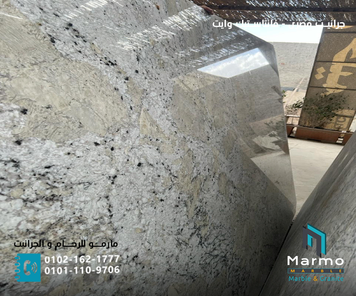
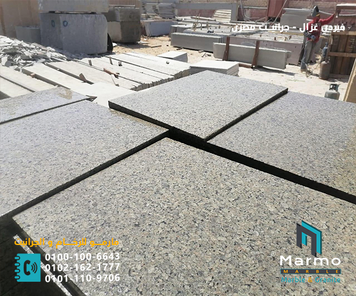



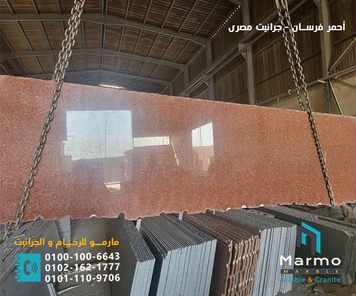

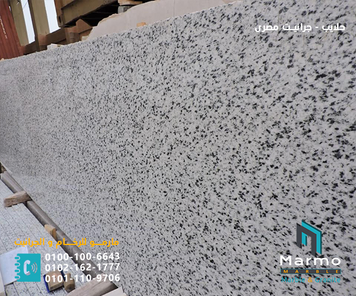
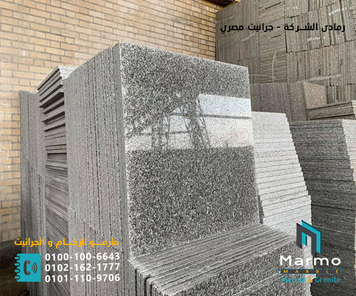
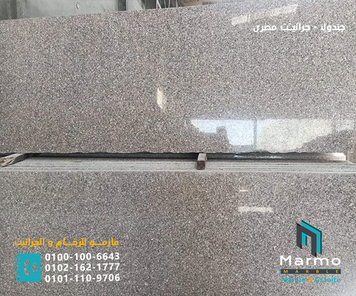
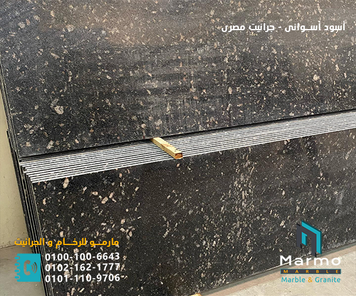





Comments